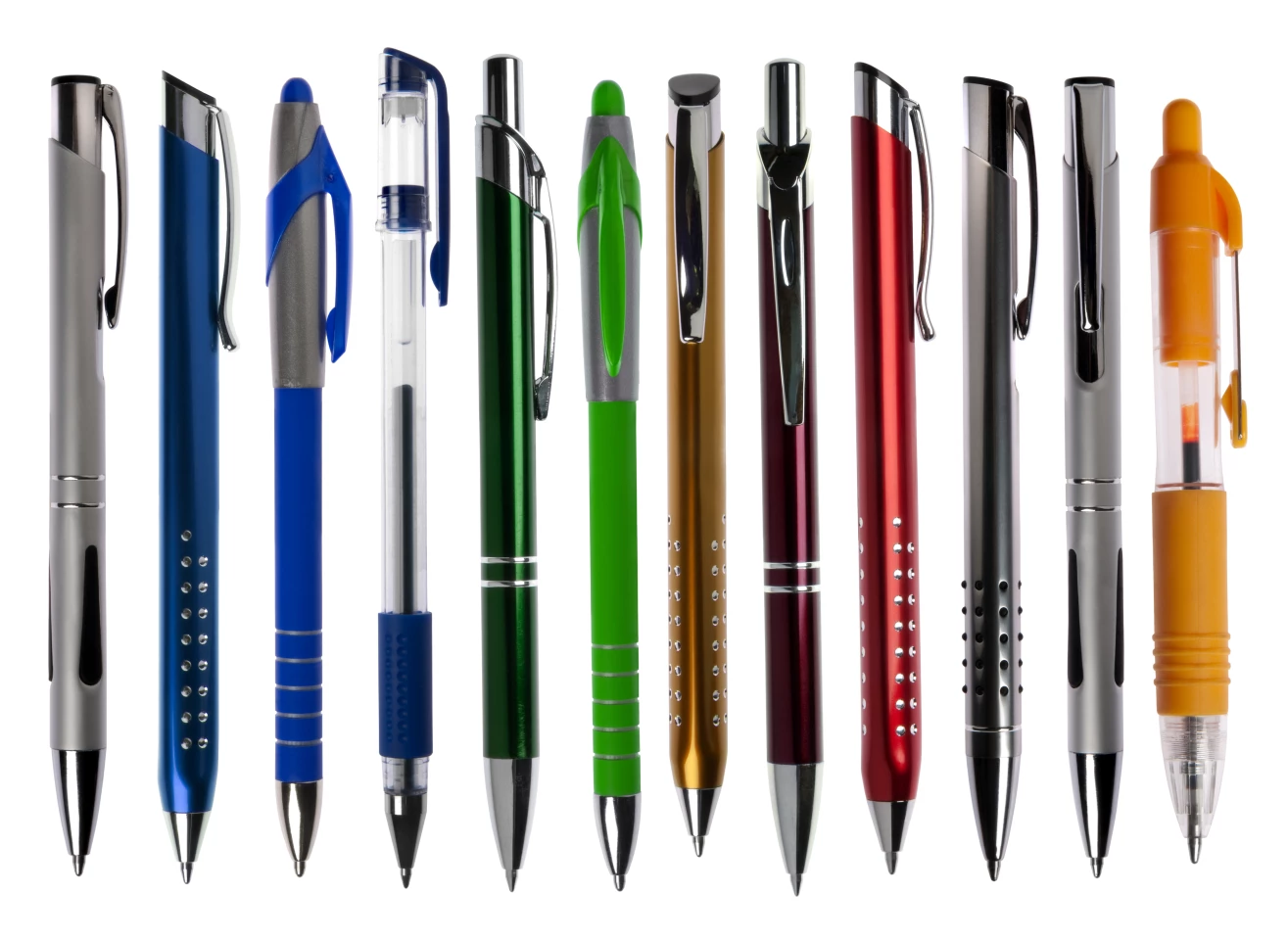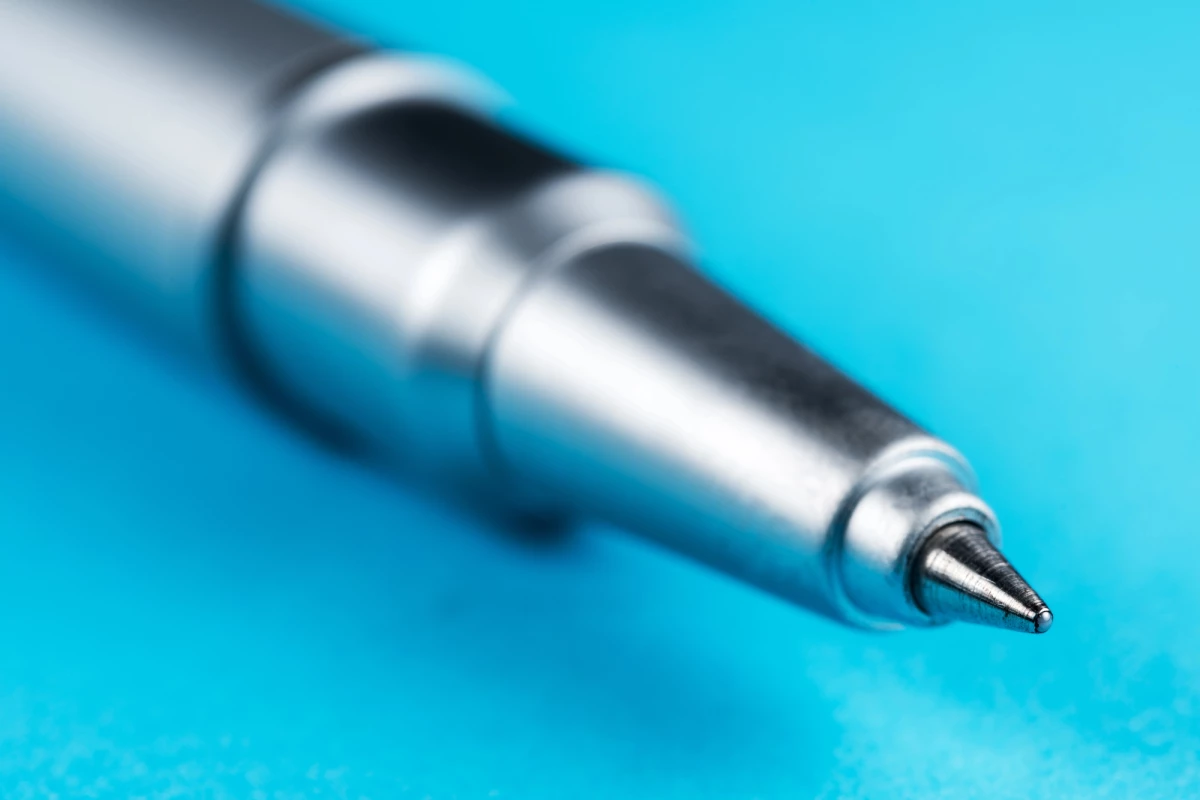In 1945, a new invention that had helped to win the Second World War went on sale in the United States and Britain. First seen as an expensive novelty, it soon went on to become not only a part of our everyday lives, but one that revolutionized how we communicate. This was the Biro, the first successful ballpoint pen – a deceptively simple writing instrument with a very big story behind it.
Every year, staggering numbers of ballpoint pens are sold. One model from one brand alone sells at a rate of 57 every second and had racked up sales of 100 billion by 2006. Remember, that's not all pens or those of one company. It's just one model from one company. Add all the sales of all ballpoints, and it's a small wonder that Douglas Adams wrote of a fictional planet where lost Biros migrate through wormholes in space to enjoy Biro-oriented lifestyles.
These pens go by many names around the world, but they're known mainly by two monikers. One is "ballpoint pen," which describes the principle behind it, and "Biro," which is the name of the man who invented the first practical version.
Whatever the name, these pens are so cheap that they're a prime example of the disposable age. When one stops writing, it's thrown away because there's sure to be a replacement sitting in a drawer somewhere, and if not, three scores can be bought for the price of a small latte.
In fact, we take them completely for granted. They are usually at hand, we pick them up and use them without even thinking about it. They are so much a part of our lives that we forget what sophisticated pieces of technology they are until we need one and don't have one. It's a small wonder, therefore, that emergency kit lists often include pens.
Before the Biro
But where did the ballpoint come from? What is so special about it?
Before the Biro, writing with ink hadn't changed much since ancient times when people used to cut goose quills into nibs with a slit in the tip to hold ink to convey to a sheet of paper, vellum, or papyrus. A couple of hundred years ago, pens with steel nibs were introduced, and in the 19th century, fountain pens were invented that could hold a reservoir of ink in a rubber bladder in the barrel.
But these pens all had very serious limitations, and fountain pens were also so expensive they were often given as presents to mark important occasions like school graduations. Plus there were many materials fountain pens couldn't write on at all.
The idea of replacing the nib with a little metal ball rolling in a socket to collect and deliver ink isn't a new one. In 1888, the American John J. Loud patented a crude ballpoint pen that could write on leather, wood, and coarse wrapping paper. This didn't work very well, didn't sell, and the patents were allowed to lapse. Over the years, many other attempts to produce a ballpoint pen were made, but these were extremely crude and could often barely scribble a legible word, or they leaked like a sieve when they didn't clog.
László Bíró
Then, in the 1930s, László Bíró came along. When he wasn't working as a newspaper editor in his native Hungary, he was trying his hand as a hypnotist, race car driver, and surrealist painter, among many other things. Today, he's an inductee into the National Inventors Hall of Fame and his life makes for an intriguing story.

As a journalist, one thing that Bíró found frustrating about his job was how impractical fountain pens were, finding them slow to fill, tending to splatter, leaving smudged pages, and the ink was slow to dry. In contrast, he was impressed by the ink used to publish his newspaper, which dried almost instantly and didn't smudge.
With the aid of his brother György, who was a dentist with a background in chemistry, Bíró set out to create a new ballpoint pen design based on viscous ink similar to newsprint. After many false starts and setbacks, both technical and financial, the final result was a pen with a steel ball in a socket and an ink barrel filled with an ink paste that didn't evaporate like conventional ink. This simple description covers a lot of work in finding the right shape for the ball, the right composition for the ink, and getting a dozen details sorted out, but it did result in a British patent in 1938.
Argentina and the Second World War
Bíró's work came at a time of political turmoil in the days before the outbreak of the Second World War. The Hungarian government was growing openly fascist and, as Jews, Bíró's family was increasingly threatened. Fortunately, a chance meeting at a hotel with the then-president of Argentina, Augustín Pedro Justo, led to an invitation to set up shop in Argentina and Bíró and his family fled there by way of France after many delays.
This may have made the Bíró family safer, but marketing the new pen, now called the Biro, was still far from easy. As a result of financial and personal problems, Bíró's invention ended up muddled in a number of international patents and licensing agreements in different companies and individuals in various countries.
It looked as if the Biro would never reach a mass market, but the war changed the fledgling company's fortunes when the new pen came to the attention of the British Ministries of Supply and Aircraft Production, which arranged for an order for 30,000 units for the RAF, whose pilots had to write in their logs, mark charts, and make calculations while in flight, so they needed a pen that wouldn't leak like fountain pens did at high altitudes and could be handled as casually as a pencil.
Post-war
After the war, Bíró tweaked the design to make the ink flow more smoothly by making it flow by capillary action rather than gravity, so the pen could be held at different angles. Meanwhile, other companies became interested in ballpoint pens and either secured the rights to Bíró's design or found ways around his patents by reverse engineering.
In 1945, Biros hit the market en masse in the United States and Britain with mixed results because of stiff competition, such as the Reynolds company, which made a deal with Gimbels department store in New York to sell its version of the ballpoint pen, the "Reynolds Rocket", moving 30,000 of them in the first week.
Unfortunately, all of the pens by various companies had one thing in common: they were all incredibly expensive, with the Reynolds pen selling for US$12.50, which is the equivalent of $192.00 in 2021 dollars. As a result, the small market was soon saturated and many companies folded.
Then, in the 1950s, the French entrepreneur Marcel Bich licensed the Bíró design and improved upon it by making it extremely cheap to produce. This became the famous Bic Cristal, also known as the Bic Pen, which consisted of a simple ballpoint fixed to a transparent plastic reservoir set in a hexagonal plastic tube with a mysterious little hole part way down to equalize air pressure. This quickly became the world's best-selling pen and was soon followed by many imitators that sold in the billions.
The Biro Revolution

Before the Biro, writing was a ritual. Go into any hotel more than a century old that hasn't been extensively renovated, and you're likely to see writing desks in the lobby and even in the rooms for the guests.
If you wanted to write, you didn't just pull your pen out of your pocket and begin scribbling. You needed a firm, flat surface. You needed the right grade of paper, a serviceable pen, pen wipes to clean the nibs, an inkwell, blotting paper, a blotter, and gum arabic sand to sop up excess ink – not to mention patience enough to let the ink dry. If you were well-off, you might have a fountain pen, which did away with the inkwell, but not completely since fountain pens needed to be refilled every day if the writer was prolific. If not, the ink would still dry in the reservoir.
On top of all this, how one wrote with these old pens was very different from today, beyond having to keep dipping a nib pen in the ink every few words. With a ballpoint pen, one presses the tip to the paper and the ink simply rolls out onto the fibers. However, with a nib or fountain pen, the ink flows out under gravity or, in more elaborate fountain pens, the force of a piston. In addition, writing with them required great concentration to avoid splattering ink or tearing the paper with the sharp metal nib.
Small wonder that writers and clerks could be easily identified by their ink-stained fingers and shirts.
As a result, it's much easier to write with older pens by keeping the nib against the paper and lifting it as little as possible. Writing in cursive with such pens is relatively fast and easy and the results are legible. Writing block letters, as many do today, is slow, messy, and hard to read.
With a ballpoint, one can write without thinking, on almost any surface, and even underwater, if you feel the urge to do so. There are even pens that can work in the weightlessness of space. It's a technology that is so ingenious in its simplicity we don't even think about it until our pen runs out of ink.
Though most people haven't noticed because it happened too slowly, the Biro has changed how we write. Today, writing in block letters is increasingly common and cursive is so rare that it's often asked if it's even worth teaching it to children any more. It's an evolution that has altered written communications in a way not seen since the invention of the printing press and relegated its predecessors to the backwaters of calligraphy and nostalgia.
So, the next time you scribble the tip and sign the bill at a restaurant, take a moment to consider the game-changing story that made that simple act possible.







